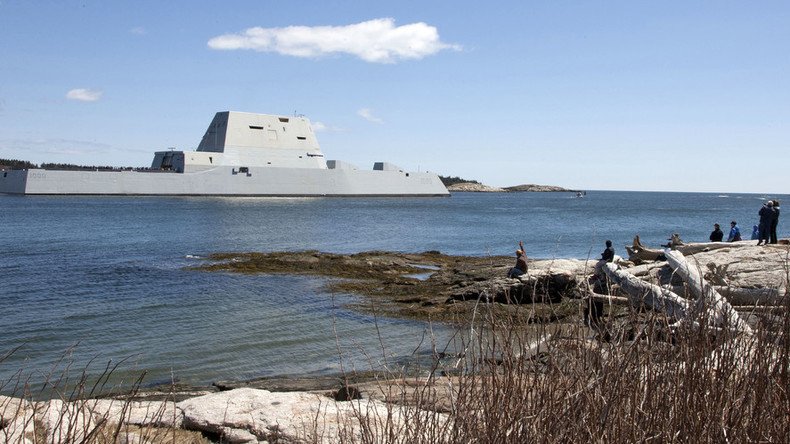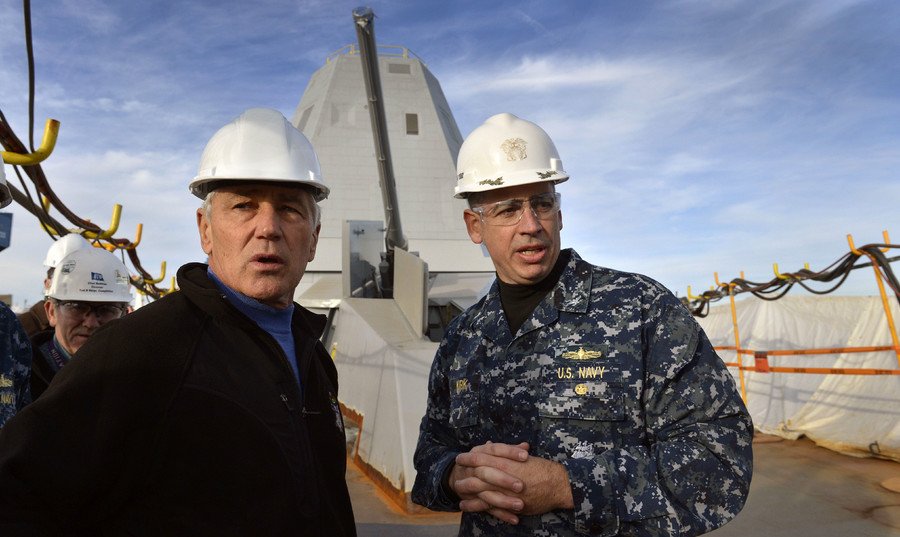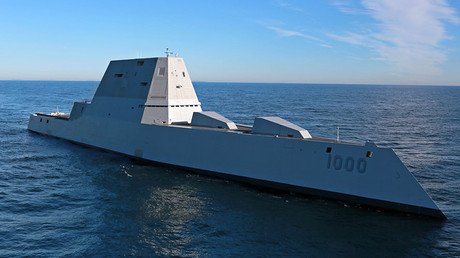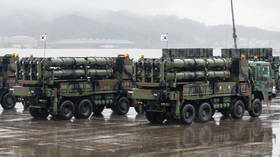Captain Kirk takes delivery of US Navy’s futuristic stealth destroyer

After nearly two decades of development and costs approaching $4.4 billion, the US Navy has taken delivery of the DDG 1000, named after the legendary Admiral Elmo Zumwalt. The 610-foot stealth destroyer is the first of its class.
"Today, we celebrate the world’s greatest Navy taking ownership of the world’s greatest ship,” Rear Admiral (select) James Downey said in a statement after the ceremony at the General Dynamics Bath Iron Works in Brunswick, Maine.
Downey called DDG 1000 “the most technically complex and advanced warship the world has ever seen,” and said its delivery was a “significant achievement” for the entire Navy.
The ship was christened after Admiral Elmo Zumwalt in 2014. It will officially bear the name in October, after a commissioning ceremony in Baltimore, Maryland.

“Zumwalt's crew has diligently trained for months in preparation of this day and they are ready and excited to take charge of this ship on behalf of the US Navy,” said Captain James Kirk, the ship’s commanding officer. “These are 143 of our nation's finest men and women who continue to honor Adm. Zumwalt's namesake with their dedication to bringing this ship to life.”
At 610 feet (185 meters) long, the Zumwalt is the size of a WW1-era Dreadnought battleship, but has a much smaller radar cross-section, as fishermen off the coast of Maine discovered during the destroyer’s sea trials this spring.
Other features the Zumwalt shares with early 20th-century battleships is the “tumblehome” hull, where the ship’s sides slope outward, rather than inward, and a backward-angled wave-piercing bow. Rather than ramming enemy ships, however, the hull of DDG 1000 is intended to slice through waves.
Critics have pointed to the history of stability issues with the tumblehome hull. The ship’s designers at Raytheon and their Navy colleagues have maintained that the Zumwalt should be perfectly sound, however.
The innovative Integrated Power System (IPS) should be able to allocate all 78 megawatts of power provided by the ship’s gas turbine engine to propulsion, combat systems or services, depending on where it is needed, the Navy said.
The Zumwalt-class destroyers will be armed with a battery of two advanced guns, capable of firing long-range projectiles to a distance of up to 63 nautical miles (117 km). The ships were also designed to carry eighty launchers capable of firing Tomahawk, Sea Sparrow, Standard and ASROC anti-submarine missiles. These combat systems will be installed throughout 2017 by Raytheon, and the ship should be ready for operational testing by early 2018, Defense News reported.
After the ceremony in Baltimore, scheduled for October 15, the Zumwalt will sail to its new home port in San Diego, California, the Navy said.
Today's delivery of the #ZUMWALT marks nearly 2 decades of work. My story https://t.co/ggptvYzTUDpic.twitter.com/adUDPTY9i7
— Chris Cavas (@CavasShips) May 20, 2016
DDG 1000 is the result of over two decades of research, planning, development, construction and testing. Initial plans envisioned replacing the 62 vessels of the Arleigh Burke class with 32 of the new destroyers. The Navy revised the program repeatedly, shrinking the class to 28, then seven, and finally three ships, according to Defense News.
Admiral Elmo 'Bud' Zumwalt Jr. commanded the US naval forces in Vietnam and in 1970 became the youngest Chief of Naval Operations in US Navy history. Against the wishes of Admiral Hyman Rickover, champion of the nuclear navy, he favored the purchase of many lighter, cheaper ships.
Bath Iron Works is currently building the two follow-on vessels, currently designed as the DDG 1001 Michael Monsoor, and DDG 1002 Lyndon B. Johnson. Monsoor was a Navy SEAL who jumped on a grenade to save his teammates during a 2006 mission in Ramadi, Iraq. Lyndon Baines Johnson was the 36th president of the United States.













